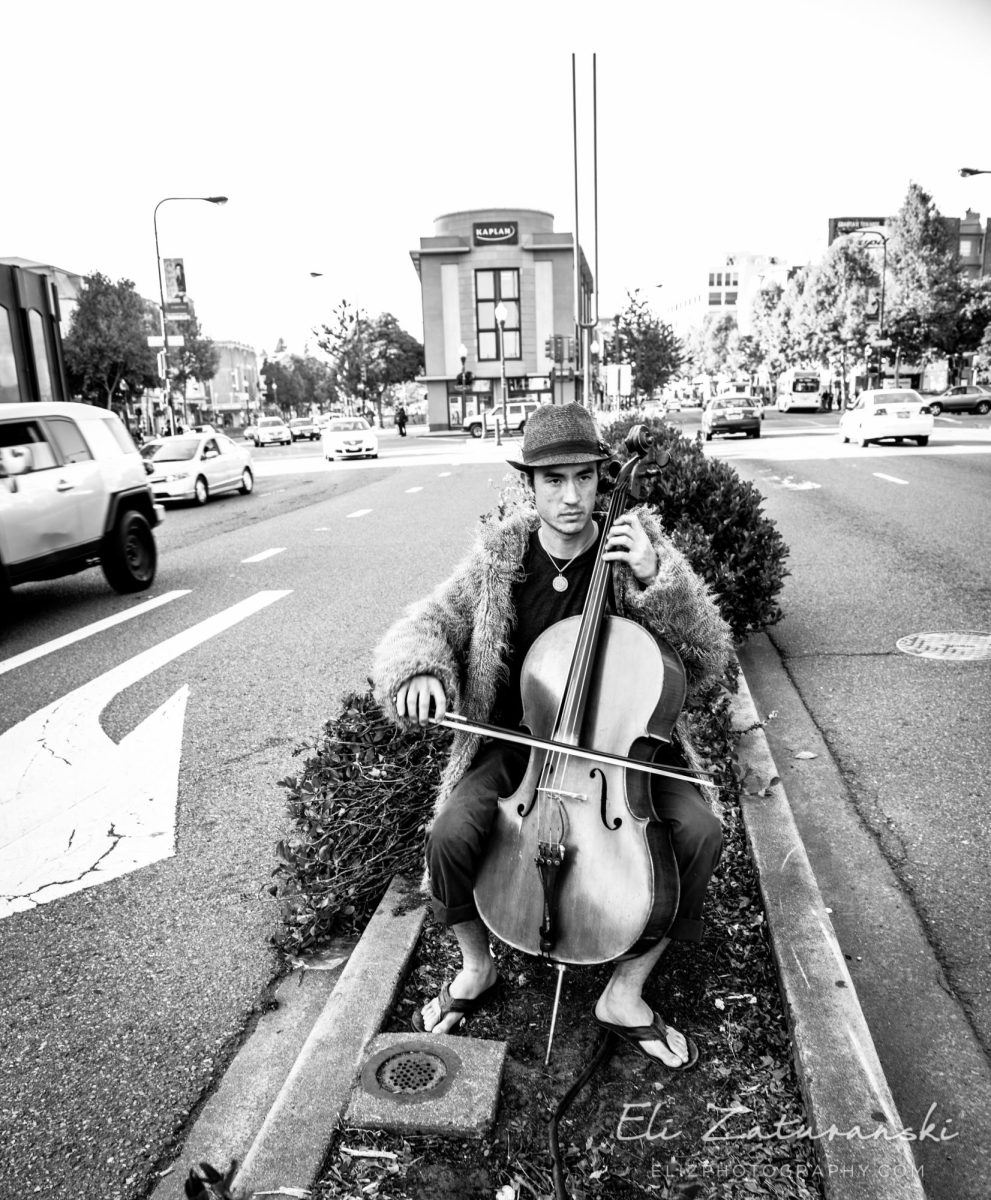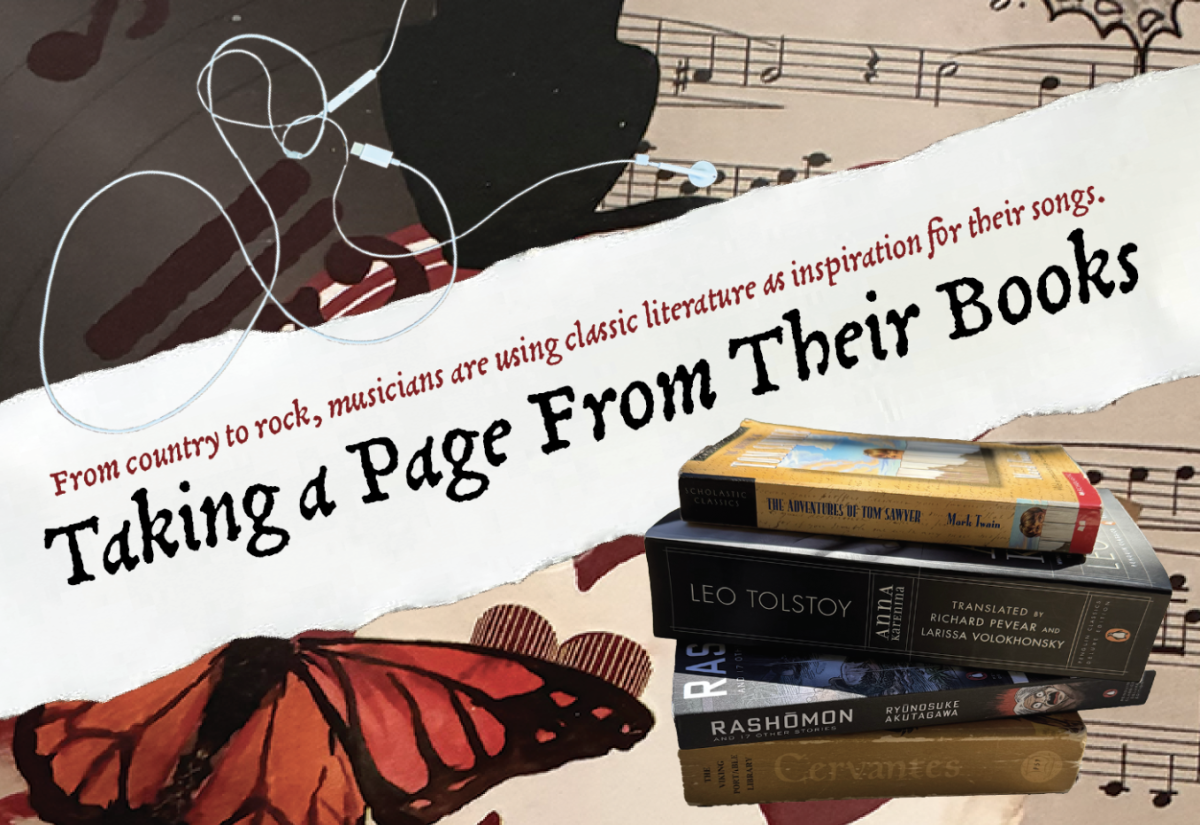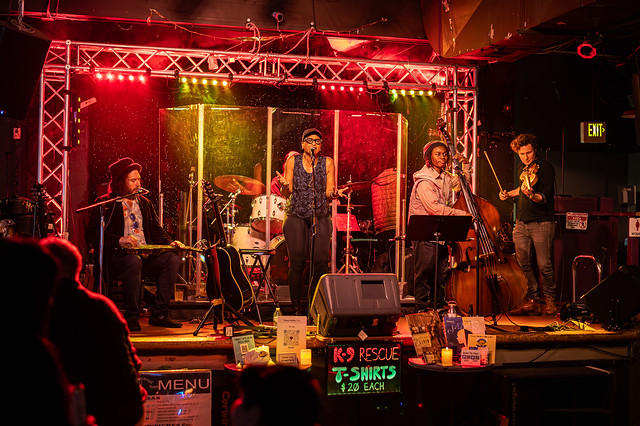An upbeat, electronic-pop track loops in the background, blending with rich sounds of cello strings to create what can best be described as a classical hip-hop fusion. Wearing a casual baseball cap and Hawaiian shirt, Joey Chang — better known to his supporters as “Cello Joe” — can occasionally be found on the sidewalks of downtown Palo Alto in his true element: sharing his passion for music and humor with those around him. Chang brings this ingenuity and lightheartedness to his work as an artist, following his mission statement: “Making the world a better place one day at a time … putting a smile on a stranger’s face.”
Chang, who grew up in Los Altos, was first introduced to the cello in fifth grade, when his elementary school offered him the opportunity to try out different kinds of instruments for his music class.
“I thought if I could get good at the cello, I would be able to excel at it, and I stuck with it because my parents encouraged me,” Chang said. “My father told me that when I was a scientist or a doctor, I would be able to relax by playing the cello.”
Through years of rigorous training, including orchestra practices and private lessons, Chang has experienced the ups and downs of being a musician.
“I had a hard time learning, like most people learning anything, but you have to push past that point where it’s difficult,” Chang said. “I struggled for many, many years with learning the cello, and another reason that I stuck with it was because I was in a youth symphony, and we had a four-hour practice every weekend.”
Chang continued to develop his music career by attending Berklee College of Music to work on his craft, allowing him to experience playing the cello in large venues.
“The pro of being in a big concert hall is that you are probably being paid a lot of money [for] playing for a lot of people,” Chang said. “The cons of that are that you don’t really have a very personal connection with the people that you are playing for, [though] you might [see] some of them at a meet and greet afterwards or before.”
Chang’s repertoire also includes a contrasting art form: street performance, also referred to as “busking.” Being a street performer, a medium in which he plays both the cello and buckets — his makeshift plastic drums — for those passing by, offers Chang a different type of fulfillment and flexibility than larger concert experiences.
“You don’t have to book anything — you can just go and play wherever you want, whenever you want,” Chang said. “You have a very personal connection with the people you are playing for, and you are getting great feedback about what’s working and what’s not, especially if you’re improvising or writing your own songs, like I was.”
Street artists are able to put personal spins on the music they create due to the flexibility of how they perform. This accessibility provides a space for more alternative musicians to express themselves. Given that record or orchestra performance is more mainstream, the busking community is united by the often less traditional music styles they play and their strong passion for music.
“I like seeing really unique people who are doing something totally different,” Chang said. “You tend to see a lot of weirdos out on the street, [like] people that build their own instruments or have a very unique take on it.”
This distinctive culture is also marked by the independence and creativity of performers. Chang believes this style is especially appealing to people who want to express themselves in a more approachable way that can coexist with other commitments and busy lives.
“Street music culture is a very DIY [do-it-yourself] group of people that want to take it [music] to the streets,” Chang said. “They don’t have time to be contacting venues, setting up dates, promoting the show or trying to get people to show up to the show and buy a ticket.”
The opportunity to adjust his performance to the direct responses of his audience has also helped Chang grow in his professional musician skills, primarily due to the sheer amount of practice and exposure that comes from busking.
“It’s great that you can get a lot of stage time, a lot of performance time, when you’re busking on the street,” Chang said. “You get really comfortable with not feeling stage fright, [and] … it helps you with overcoming performance anxiety.”
On occasion, the competition for limited space and attention can cause minor issues between buskers. Usually, Chang finds these issues are easily reconcilable.
“There have been a few times when people have been a little bit agro because I was getting on their turf,” Chang said. “People get really possessive over their particular corner or their particular hallway.”
Nonetheless, witnessing the art of other street musicians and participating in the community has left Chang with an overall positive outlook on the busking community.
“It’s a very supportive community and people are really friendly,” Chang said.
In his many years of performing, some of Chang’s fondest memories have been from his projects in Palo Alto, where he first started his street performances.
“Downtown Palo Alto has been pretty good to me,” Chang said. “There was World Music Day, when I brought out my pedal-powered sound system, which is where I have a bicycle that creates electricity for the speaker. I got a pretty big crowd, and it was just great to busk down there.”
Since then, Chang has biked across the US, Canada, Mexico, Europe and Australia for multiple music festivals, biking over 10,000 miles to reach each gig, and has performed a one-man musical striptease act. Of his many performances, Chang’s favorite memory of busking was when he was playing the buckets underneath an underpass in San Francisco on New Year’s Eve and received a $400 tip. These unique experiences are why Chang believes that busking is unique to any other kind of musical performance or form of self-expression.
“My favorite thing about it [busking] is the immediacy, the uniqueness of it,” Chang said. “There are some talented people who play on the streets.”











